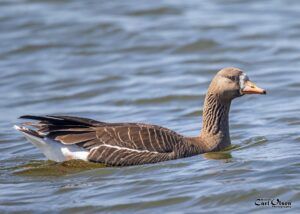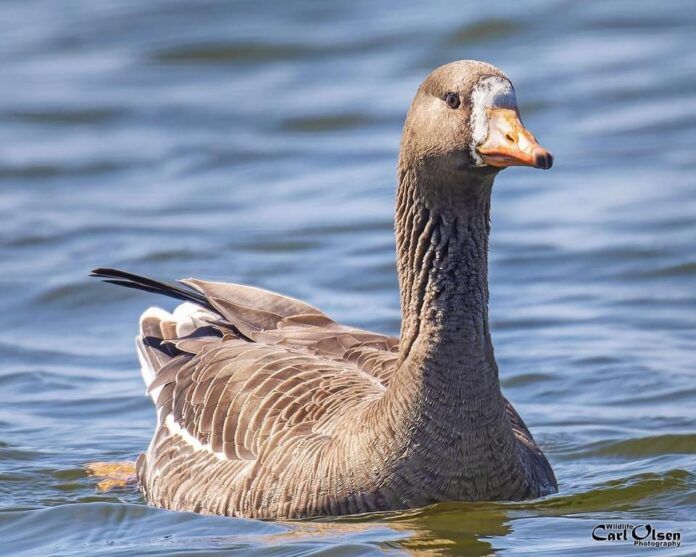Today we present the Greater White-fronted Goose
They are a stocky brown goose that occurs across the western half of the Northern Hemisphere. They have white feathers around its pinkish orange bill, orange legs, and a white line down its side. These geese breed in the arctic tundra and winter in large flocks in wetlands, lakes, and croplands. They eat almost entirely sedges, grasses, berries, and plant tubers during the summer and seeds, grain, and grasses in the winter.

Greater White-fronted Goose pairs stay together for years and migrate together, along with their offspring. White-fronted Goose family bonds can last longer than in most geese, and some young stay with their parents through the next breeding season. Parent and sibling associations may continue throughout their lives.
Before migrating north, female Greater White-fronted Geese gain 30% more weight to fuel migration and egg production. The oldest recorded Greater White-fronted Goose was at least 25 years, 6 months old when it was found in Louisiana in 1998. It had been banded in Nunavut in 1975.


